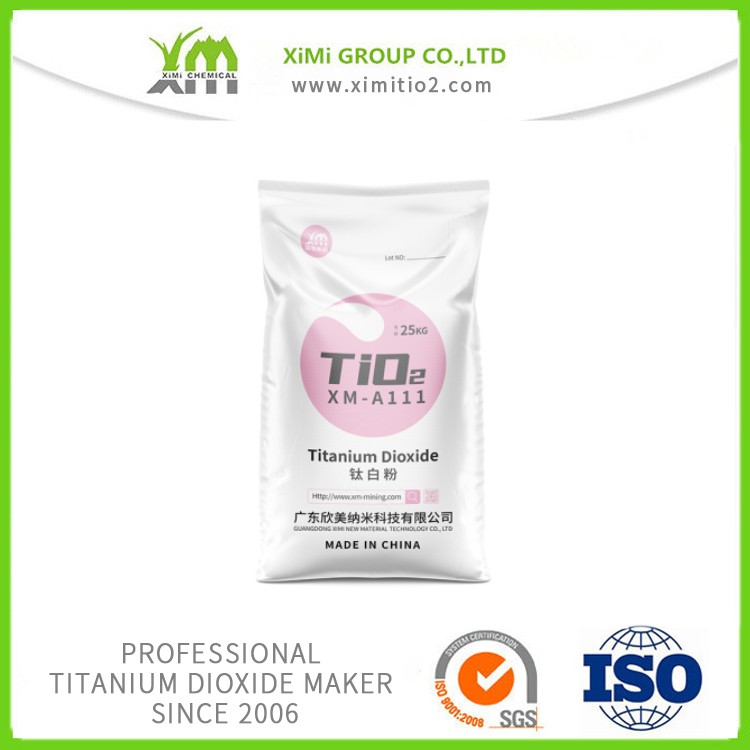July 06, 2023 14:35 ET | Source: ReportLinker ReportLinker
New York, July 06, 2023 (GLOBE NEWSWIRE) -- Reportlinker.com announces the release of the report "Global Titanium Dioxide Market Assessment By Grade, By Process, By Application, By Region, Opportunities, and Forecast, 2016-2030F" - https://www.reportlinker.com/p06460572/?utm_source=GNW Global Titanium Dioxide (TiO2) Market reached USD 20.95 billion in 2022 and is expected to grow at a CAGR of 5.51% and estimated to reach USD 32.18 billion by 2030. The most significant white pigment used in the paints and coatings is titanium dioxide. It is frequently utilized because, when included into a coating, it effectively scatters visible light, imparting whiteness, brightness and opacity. Rutile TiO2 pigments are chosen over anatase pigments because they scatter light more effectively, are more stable and are more long-lasting. The use of titanium dioxide is not just limited to paints and coatings but finds its essentiality in a lot of applications ranging from printing inks, paper and plastics. TiO2 is heavily used in paper industry owing to its supreme white color. Globally, demand of paper is growing at a staggering pace owing to single use plastic ban in Europe and India, leading to increased demand of paper for bags, straw, etc. China alone produces and consumes around 30% of all paper produced and consumed globally, followed by United States at around 16%. Affordable Housing Schemes increased Paints Demand Several schemes as well as policies are launched by various countries to provide affordable housing to economically weak sections such as the Pradhan Mantri Awas Yojna in India under which the completed houses in urban areas reached a staggering figure of 7.387 million in March 2023 out of 12.025 million sanctioned houses. Asia-Pacific is one of the most densely populated regions, contributing 32.5% of the global population. It leads to an increasing demand for housing in the region which means an increased usage of paints and coatings leading to a greater demand for titanium dioxide from this market. Similarly, in United States “Great American Dream” is running from more than a decade now to provide housing for all. According to the United States Census Bureau and the U.S department of Housing and Urban Development the privately owned housing started in January of 2023 were at a seasonally adjusted annual rate of 1.309 million. In United States, privately owned housing completions in January 2023 reached 1.4 million which increased by 12.8% from January 2022 when 1.25 million were completed. In the revised estimate of December 2022, construction of 1.4 million private owned households was expected for January 2023 and achievement it was 1% above expected volume. The increasing number of housing completions in the United States itself show an increased demand for paints and coatings and this trend seems to be followed globally. Rubber Economy to Further Flourish with Advancement in Supply-Chain The rubber industry also requires the usage of titanium dioxide to some extent. According to rubber board chairman, India needs 1.5 million tons of natural rubber by 2025-2026 for which the rubber board has identified a vast stretch of land in the northeast region and west Bengal for rubber cultivation. According to All India Rubber Industries Association (AIRIA), in India, non-tire rubber sector valued USD 2 billion in 2022, which is aiming to double its exports by 2025. According to KN Raghavan Executive Director of Rubber Board India, India’s natural production of rubber increased to a nine year high in the year fiscal year 2021-22 due to higher yield and a new high in tappable area. Impact of Covid-19 on Titanium Dioxide Market The COVID-19 outbreak caused supply chain disruptions, production halts and manufacturing activity interruptions, all of which had a detrimental effect on the market in 2020. In addition, several industries like paints and coatings, papers and plastics and printing industry closed their operations, which decreased the need for titanium dioxide in 2020. During the pandemic, the revenues of most manufacturers declined. The market is recovering through developing inorganic and organic business strategies and since there is a streamlined demand being generated from several end user industries it will be back on track in no time. Impact of Russia-Ukraine War The invasion of Ukraine by Russia continues to put implicit pressure on the titanium dioxide market at a global scale. The top exporters of titanium dioxide are China, Germany and South Africa. The rising price of crude oil has an indirect impact on titanium dioxide prices since it is essential to many downstream businesses, including the paint and coatings sector. Geopolitical tension of Eastern Europe is affecting the supply chain of titanium dioxide globally. Increased demand and inadequate supply owing to interruption have led to shortage and hence an increase in raw materials prices. It further impacted several downstream industries where there’s an increment in prices of downstream products, including paint and coating. Supply distortions mainly occurred owing to conflicts between Russia and Ukraine in which Belarus and whole Western Europe is playing a part directly or indirectly. Russia being the second largest exporter of crude oil globally, war with its neighbor has created immense pressure on Middle East and North American countries. Europe banned TiO2 for being carcinogenic In September 2022, Titanium Dioxide got banned in EU 27 countries after EU Court declared it Carcinogen. The ban had a major impact on several industries including cosmetics which is a high-volume sales product. Manufacturers are seeking alternatives to TiO2 including modified starch, calcium phosphate and calcium carbonate; none of the three alternatives provide the finishing, compatibility and solubility compared to TiO2. In February 2023, an appeal for judgement of TiO2 ban was made by European Commission. Government of France has also appealed on General Court against the ban, stating the court has wrongly classified certain forms of TiO2 which are in powder form. However, despite appeals to European Court of Justice (ECJ), the case can easily take 1 to 2 years and by the time classification will remain the same, which means TiO2 will continue to be banned for consumption in EU 27. Key Players Landscape and Outlook Key players are acquiring small-scale plants in high growth developing countries to increase their sales and market share globally. With the acquisition of Kilburn Chemicals, a India based Titanium Dioxide Manufacturer in December 2021, Meghmani Organics Ltd, an India based chemical manufacturer entered TiO2 business and expanded the Phase 1 facility to 16,500 tons per annum capacity till January 2023. The company also has plan to expand capacity in its Phase 2 which requires investment of USD 45 million (Rs. 375 Crore) and commission the Phase 2 by the end of Q3 of FY 2024. Market Xcel’s reports answer the following questions: • What is the current and future market size of the product/service in question globally or specific to different countries? • How are the markets divided into different product/service segments and the market size and growth of each segment? • What is the market potential of different product segments and their invest case? • How are the markets predicted to develop in the future and what factors will drive or inhibit growth? • What is the business environment and regulatory landscape specific to the product/service? Read the full report: https://www.reportlinker.com/p06460572/?utm_source=GNW About Reportlinker ReportLinker is an award-winning market research solution. Reportlinker finds and organizes the latest industry data so you get all the market research you need - instantly, in one place. __________________________ titanium dioxide chemical

